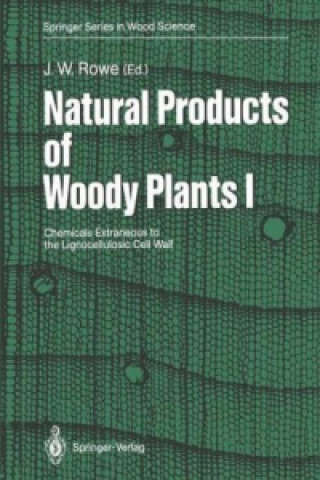
Delivery
Shopping guide





Doesn't suit? No problem! You can return within 30 days
 Gift voucher
any value
Gift voucher
any value
You won't go wrong with a gift voucher. The gift recipient can choose anything from our offer.
Natural Products of Woody Plants
 English
English
 408 b
408 b
30-day return policy
You might also be interested in


Wood as found in trees and bushes was of primary importance to ancient humans in their struggle to control their environment. Subsequent evolution through the Bronze and Iron Ages up to our present technologically advanced society has hardly diminished the importance of wood. Today, its role as a source of paper products, furniture, building materials, and fuel is still of major significance. Wood consists of a mixture of polymers, often referred to as lignocellulose. The cellulose micro fibrils consist of an immensely strong, linear polymer of glucose. They are associated with smaller, more complex polymers composed of various sugars called hemicelluloses. These polysaccharides are embedded in an amorphous phenylpropane polymer, lignin, creating a remarkably strong com posite structure, the lignocellulosic cell wall. Wood also contains materials that are largely extraneous to this lignocellulosic cell wall. These extracellular substances can range from less than 1070 to about 35% of the dry weight of the wood, but the usual range is 2% -10%. Among these components are the mineral constituents, salts of calcium, potassium, sodium, and other metals, particularly those present in the soil where the tree is growing. Some of the extraneous components of wood are too insoluble to be ex tracted by inert solvents and remain to give extractive-free wood its color; very often these are high-molecular-weight polyphenolics.
About the book
 English
English




 How to shop
How to shop






























